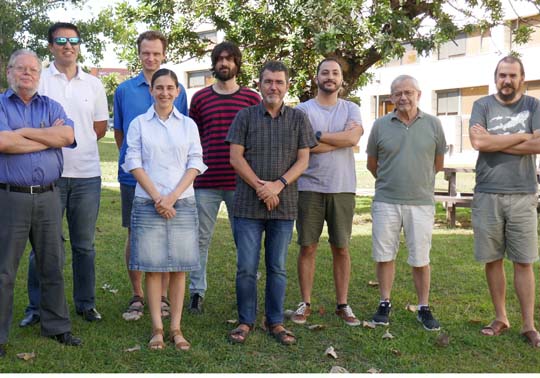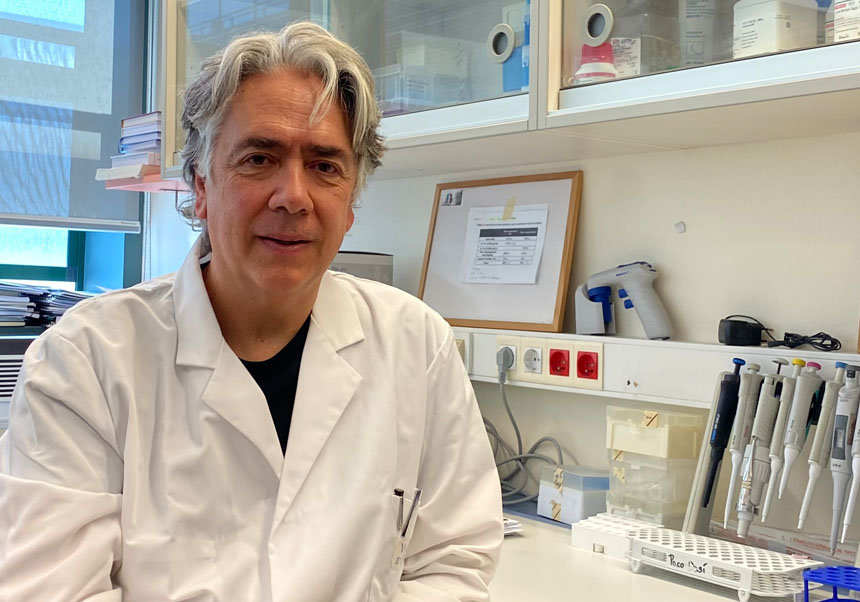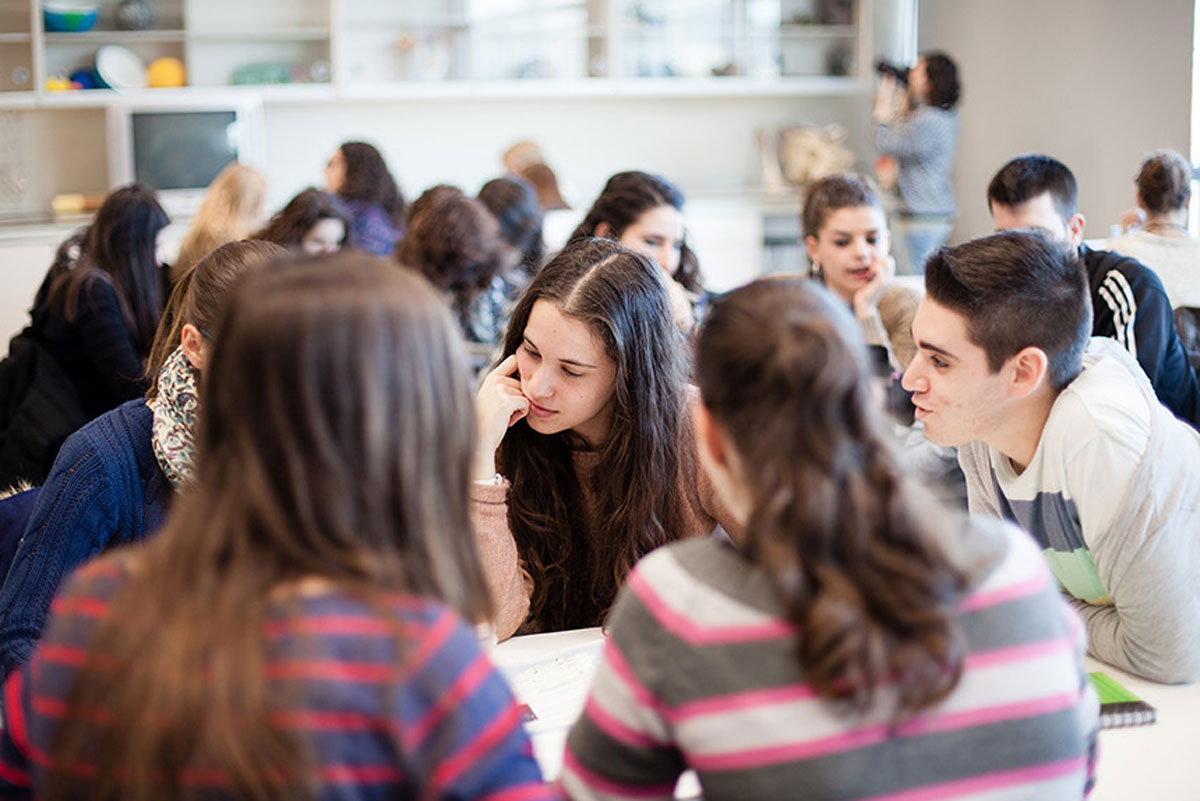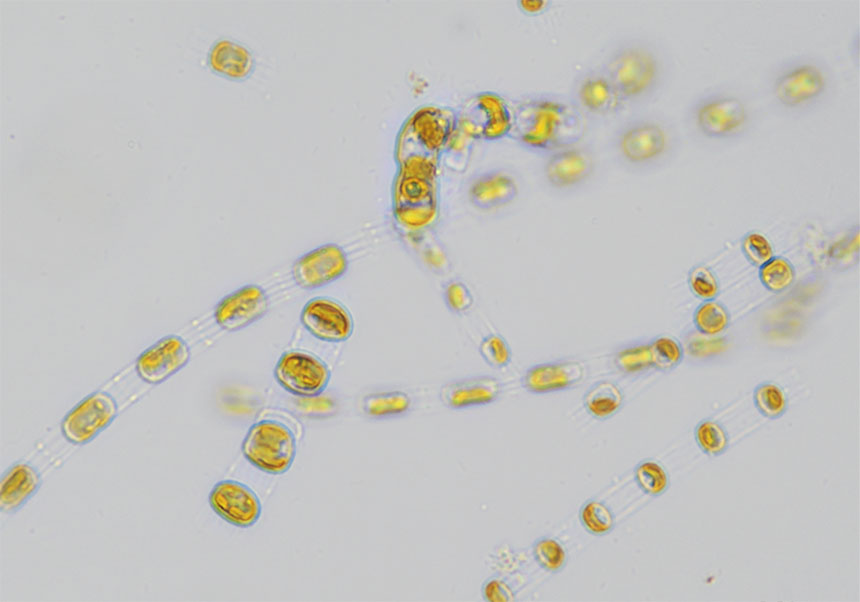The LIGO-Virgo global network of interferometers opens a new era for the gravitational waves science
- Press Office
- September 28th, 2017

The VIRGO Collaboration and the LIGO Scientific Collaboration present the first observation of gravitational waves made by three detectors. This result highlights the scientific potential of a global network of gravitational waves detectors, thus achieving a better location for the source and access to the wave’s polarization. Scientists of the Universitat de València of the Virgo Collaboration.
The two detectors of gravitational waves by laser interferometry (LIGO), which are located in Livingston, Luisiana and Hanford, Washington, USA and the Virgo detector, located at the European Gravitational Observatory (EGO) in Cascina, near Pisa, Italy, detected a transitory signal of gravitational wave produced by the coalescence of two black holes of stellar masses.
The observation of the three detectors took place on 14th August 2017 at 10:30:43 UTC. The detected gravitational waves - wrinkles in space-time - were emitted during the final moments of the fusion of two black holes with masses of approximately 31 and 25 times the mass of the Sun and located around 1.8 billion light-years. The resulting rotating black hole has about 53 times the mass of the Sun. This means that approximately three solar masses were converted into energy in the form of gravitational waves during coalescence.
This is the fourth detection of a binary system of black holes. Although this event has astrophysical relevance, it also has an important added value: this is the first gravitational wave signal that has been captured by the Virgo detector, which has recently completed its improvement to Advanced Virgo.
Spanish participation
The new discovery is especially important for the gravitational waves Spanish community, since a research group of the Universitat de València (UV), directed by the professor José Antonio Font, has recently joined the Virgo collaboration. With this new group, the Spanish efforts in LIGO-Virgo collaboration have significantly increased, since this collaboration only included one group of the Universidad de las Islas Baleares (UIB), which joined the LIGO Scientific Collaboration in 2002 under the leadership of the professor Alicia Sintes.
Sintes is excited about the discovery and affirms that Spain ‘has a very active astronomer’s community. The improved location of the sources makes gravitational wave observations extremely attractive to the astronomical community’. In addition, Sintes hopes that there will be ‘diverse interactions between groups of different areas that will improve our understanding of the Universe’ and hopes that ‘the observation of the signal by the Virgo detector is an incentive to redouble efforts to develop a European third-generation gravitational wave detector and serve to further intensify the collaboration between the LIGO and Virgo European groups.
‘We have a very intense year ahead of us’, says Sascha Husa, from the UIB group. ‘The next observation period will start in autumn 2018 with a significantly improved sensitivity. We expect to detect several signals per month, which will require to develop multitude of detailed models of gravitational waves to extract all the possible information about the new events’.
Professor José Antonio Font, leader of the UV Virgo group, highlights: ‘There is no doubt that for the Virgo Collaboration, joining LIGO during the second observation period has been a major challenge, successfully achieved on the 1st of August 2017. The team in charge of the implementation of the Advanced Virgo detector did a fantastic job, delivering it in record time with the necessary sensitivity to fully collaborate with LIGO in the search for possible new detections. A wonderful example of such collaboration is the recent triple detection of the GW170814 signal’. Font adds that ‘for the Virgo group of the UV it has been a great honour to have witnessed this enormous organizational effort and to have actively participated in some of the characterization activities of the Virgo detector’.
‘It is wonderful to see for the first time a gravitational wave in our new Advanced Virgo detector, only two weeks after it began to take data officially’, affirms Jo van den Brand, from Nikhef and the Amsterdam University, spokesperson of the Virgo Collaboration. ‘It is a great reward after all the work undertaken in the Advanced Virgo project to improve the instrument during the last six years’.
The discovery, which has been accepted for its publication in the Physical Review Letters magazine (the article is available to be downloaded in these links: https://dcc.ligo.org/p170814 and https://tds.virgo-gw.eu/gw170814), was made by the Virgo Collaboration and the LIGO Scientific Collaboration, which includes the GEO and OzGrav Collaboration.
















